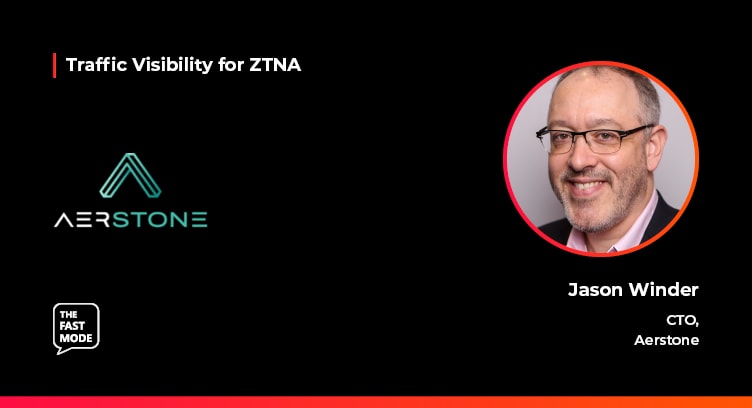The Fast Mode spoke to Jason Winder, CTO of Aerstone on the impact of traffic visibility on ZTNA networks. Jason joins us in a series of discussions with leading cybersecurity and networking vendors, assessing the evolution of ZTNA technologies, the roadmap for ZTNA deployments, the benefits of ZTNA for enterprise and telco networks, and the need for real-time traffic visibility technologies such as DPI for ZTNA.
Ariana: What challenges do you see across ZTNA deployments?
Jason: Most of the organizations we work with have a massive asset management problem. Very few organizations have a solid understanding of which devices connect to the corporate network, how they connect, and what they need to access. Companies are justifiably quite reticent to enable ZTNA, for the same reasons they've been hesitant to enable 802.1X port-based network access control. Locking down network access carries a significant risk of damaging a company's ability to function. Companies must solve the asset management problem before they can implement more advanced security controls.
Ariana: Why is cloud a key component of ZTNA?
Jason: Cloud computing adds significant complexity to ZTNA goals. Most large companies have a highly imperfect understanding of which applications are in use across all lines of business, or where those applications are hosted. The pervasive existence of "Shadow IT" highlights this problem, as most CISOs don't really know where all mission-critical services are running -- or how those services are being accessed. This is at its core a system authorization problem, which requires a higher level of administrative security control over security operations than most organizations are prepared to exert. Companies must manage to a formal Risk Management Framework, starting with drawing security boundaries and categorizing systems, before they should consider ZTNA as a viable solution.
Jason Winder, CTO, founded Aerstone, a company dedicated to helping organizations protect their critical assets from evolving cyber threats. in 2003 with over two decades of experience in information technology. As a national intelligence officer, Jason has provided extensive cybersecurity support to the U.S. military and intelligence community, as well as to international organizations and private companies. He’s bilingual in English and French with extensive travels under his belt. Jason holds an MBA and a Masters in International Business from the Joseph M. Katz Graduate School of Business at the University of Pittsburgh, as well as a Bachelor of Arts in Economics from Drew University.
This interview is a part of The Fast Mode's Next-Gen DPI Traffic Visibility for ZTNA segment, featuring over 40 leading cybersecurity and networking solution providers and their views on the importance of traffic visibility for ZTNA. A research report on this topic will be published in January 2024 - for more information, visit here.


















